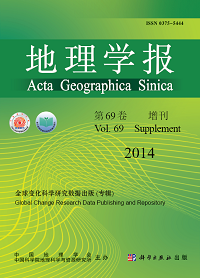ZHANG Yili, LI Bingyu, ZHENG Du
The Tibetan Plateau (TP) is an unique geomorphic region composed of specific geomorphic types, such as extreme high mountains, hills, plains, and plateaus of high altitude or sub-high altitude. There are different opinions as to the exact scope of the TP. According to the latest results of long-term fieldwork, questions related to the area and boundaries of the TP were reviewed geographically. The geomorphologic features were used to define the boundary. A 1?1,000,000 geomorphologic map was compiled based on a 1?100,000 aerial photographic map, a 1?500,000 topographic map, and the interpretation of satellite images. The boundary of the TP was delineated by referring to a relief map in 1?3,000,000 scale. The position of the boundary was quantitatively determined with GIS, and an electronic version of the map of the TP was compiled. The main conclusion is that: the TP starts from the southern edge of the Himalayan Range (not including the low Himalayas Mountains); abuts India, Nepal and Bhutan; connects to the northern edge of Kunlun, Altun and Qilian Mountains; and joins the Tarim Basin and Hexi Corridor in Central Asia. To the west of the TP are the Pamir and Karakorum Mountains, bordering on Kyrgyzstan, Tajikistan, Afghanistan, Pakistan, and Kashmir. To the east of it are the Yulong Jokul, Daxueshan, Jiajin, and Qionglai Mountains as well as the south or east piedmont of the Mt. Minshan. The TP joins the Qinling Mountains and the Loess Plateau in its eastern and northeastern part. It ranges from 25°59′37″N to 39°49′33″N, and from 73°29′56″E to 104°40′20″E, covering an area of 2542.30×103 km2, with a total boundary length of about 11,745.96 km.
